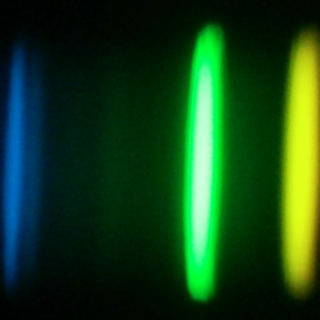Bibcode
Aguado, D. S.; Caffau, E.; Molaro, P.; Allende Prieto, C.; Bonifacio, P.; González Hernández, J. I.; Rebolo, R.; Salvadori, S.; Zapatero Osorio, M. R.; Cristiani, S.; Pepe, F.; Santos, N. C.; Cupani, G.; Di Marcantonio, P.; D'Odorico, V.; Lovis, C.; Nunes, N. J.; Martins, C. J. A. P.; Milakovi, D.; Rodrigues, J.; Schmidt, T. M.; Sozzetti, A.; Suárez Mascareño, A.
Bibliographical reference
Astronomy and Astrophysics
Advertised on:
1
2023
Journal
Citations
14
Refereed citations
13
Description
Context. SMSS J160540.18−144323.1 is the carbon-enhanced metal-poor (CEMP) star with the lowest iron abundance ever measured, [Fe/H] = −6.2, which was first reported with the SkyMapper telescope. The carbon abundance is A(C)≈6.1 in the low-C band, as the majority of the stars in this metallicity range. Yet, constraining the isotopic ratio of key species, such as carbon, sheds light on the properties and origin of these elusive stars.
Aims: We performed high-resolution observations of SMSS 1605−1443 with the ESPRESSO spectrograph to look for variations in the radial velocity (vrad) with time. These data have been combined with older MIKE and UVES archival observations to enlarge the temporal baseline. The 12C/13C isotopic ratio is also studied to explore the possibility of mass transfer from a binary companion.
Methods: A cross-correlation function against a natural template was applied to detect vrad variability and a spectral synthesis technique was used to derive 12C/13C in the stellar atmosphere.
Results: We confirm previous indications of binarity in SMSS 1605−1443 and measured a lower limit 12C/13C > 60 at more than a 3σ confidence level, proving that this system is chemically unmixed and that no mass transfer from the unseen companion has happened so far. Thus, we confirm the CEMP-no nature of SMSS 1605−1443 and show that the pristine chemical composition of the cloud from which it formed is currently imprinted in its stellar atmosphere free of contamination.
Aims: We performed high-resolution observations of SMSS 1605−1443 with the ESPRESSO spectrograph to look for variations in the radial velocity (vrad) with time. These data have been combined with older MIKE and UVES archival observations to enlarge the temporal baseline. The 12C/13C isotopic ratio is also studied to explore the possibility of mass transfer from a binary companion.
Methods: A cross-correlation function against a natural template was applied to detect vrad variability and a spectral synthesis technique was used to derive 12C/13C in the stellar atmosphere.
Results: We confirm previous indications of binarity in SMSS 1605−1443 and measured a lower limit 12C/13C > 60 at more than a 3σ confidence level, proving that this system is chemically unmixed and that no mass transfer from the unseen companion has happened so far. Thus, we confirm the CEMP-no nature of SMSS 1605−1443 and show that the pristine chemical composition of the cloud from which it formed is currently imprinted in its stellar atmosphere free of contamination.
Based on ESPRESSO GTO collected under ESO programmes 1104.C-0350, 108.2268.001, PI: P. Molaro. Based also on UVES data retrieved from the ESO archive under programme 105.20K7.001.
Related projects

Chemical Abundances in Stars
Stellar spectroscopy allows us to determine the properties and chemical compositions of stars. From this information for stars of different ages in the Milky Way, it is possible to reconstruct the chemical evolution of the Galaxy, as well as the origin of the elements heavier than boron, created mainly in stellar interiors. It is also possible to
Carlos
Allende Prieto